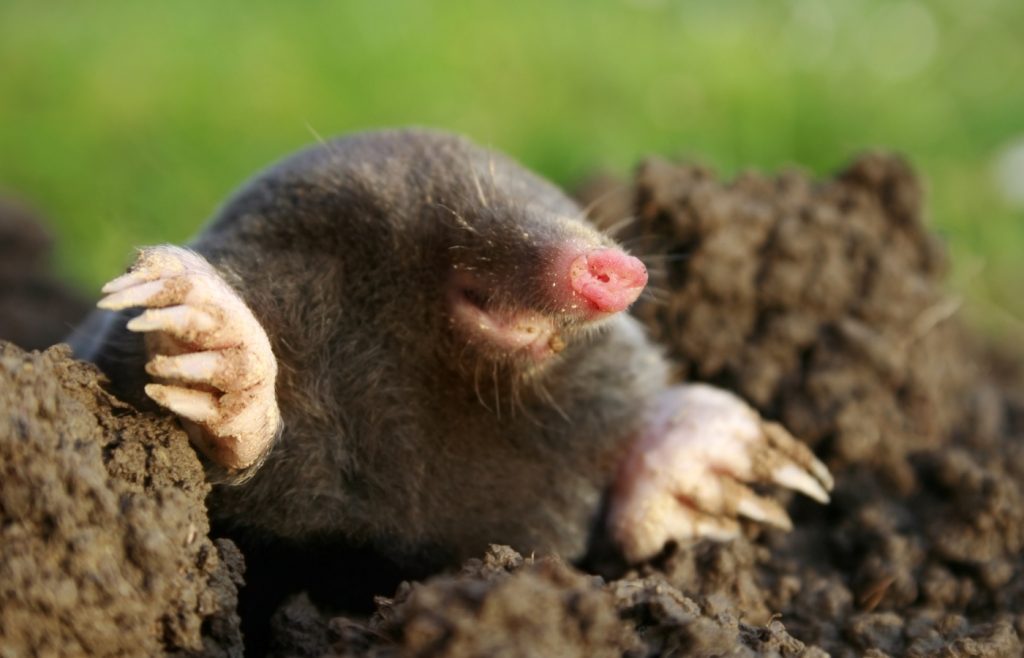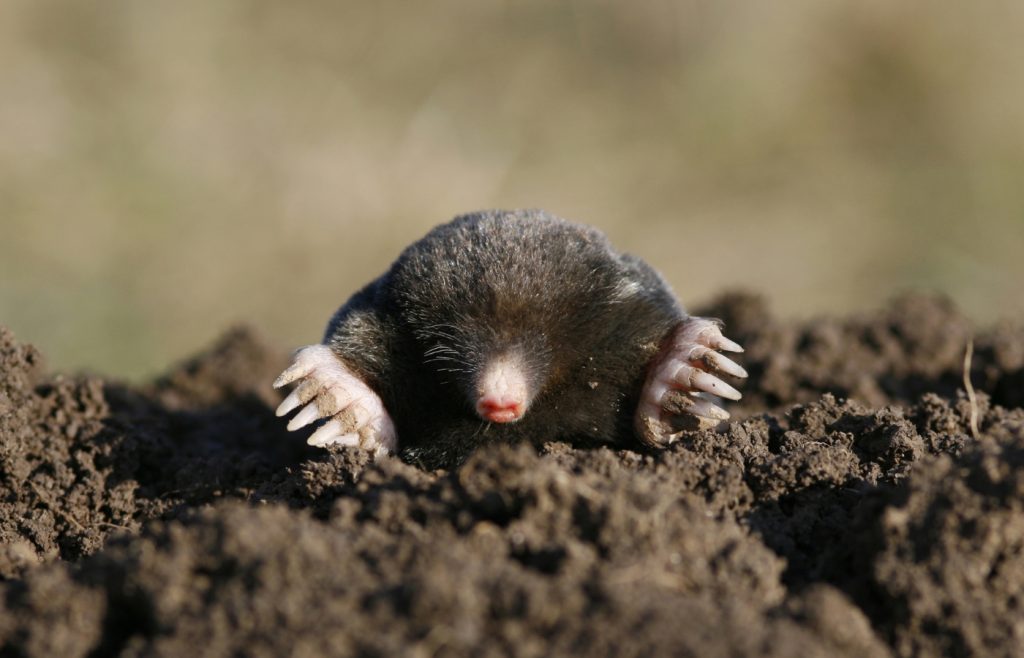Moles, while beneficial for the ecosystem by aerating the soil and controlling harmful insect populations, can turn a well-maintained garden into a construction site. With their mounds of earth and underground tunnels, they often cause frustrating damage.
Fortunately, there are natural and effective methods to preserve your green space while respecting the environment.
Moles: Learn more about this animal
Small and solitary, European moles primarily live underground. Measuring between 15 and 20 centimeters, they feed on earthworms, larvae, and other insects. Although they have poor vision, they are compensated by a highly developed sense of smell and hearing.
Their tunnels, often seen as a nuisance, serve to search for food and also contribute to soil aeration.
If their presence becomes overwhelming, it is important to prioritize gentle solutions that respect wildlife and flora.

1. Castor Meal: An Effective Repellent
Among the natural solutions, castor meal stands out as a valuable ally. This residue from the extraction of castor oil emits a smell that moles detest. Sprinkled over affected areas, it acts as an olfactory barrier.
Additionally, this product enriches the soil with nitrogen, stimulating plant growth while discouraging burrowing animals. It’s an ideal dual action for combining garden protection with natural fertilization.
2. Animal Hair: A Simple and Accessible Trick
The smell of dog or cat hair, perceived as a threat by moles, can encourage them to leave your garden. Simply place these hairs in active tunnels or near freshly created soil mounds.
Easy to implement, this method relies on recycling hair collected after grooming your pets. Repeat the process regularly to maintain its effectiveness.
3. Olive Oil: An Unexpected Method
Another surprising solution is olive oil. A few tablespoons poured into the tunnels disrupt the olfactory senses of moles, forcing them to seek a more hospitable environment.
Although effective, this method requires repeated applications, especially after rain. Being environmentally friendly, it offers an interesting alternative, especially when complemented with other natural techniques.
Prevent and Protect: Complementary Solutions
For a more holistic approach, combining several methods can be wise. Planting repellent plants such as euphorbia or castor bean around the garden helps keep moles away in the long term. If your land is particularly affected, an underground fence at 50 cm can serve as a durable physical barrier.
Modern devices, such as ultrasonic devices, emit unpleasant vibrations for these mammals, creating a peaceful zone for your crops.
Traditional solutions, such as elder branches or buried bottles, remain economical and easy to deploy options.

Moles and Gardens: Cohabitation or Removal?
Even though moles contribute to biodiversity and have benefits for the soil, it is sometimes necessary to limit their presence. By focusing on natural and non-invasive techniques, you protect your garden while respecting ecological balance.
A well-kept garden can certainly coexist with these little diggers… or remove them with appropriate methods.
And you, what techniques have you tried to keep moles away from your garden? Have natural solutions worked for you, or do you have an unbeatable trick to share? Tell us about your experiences in the comments; your ideas could be just the thing others are looking for!

